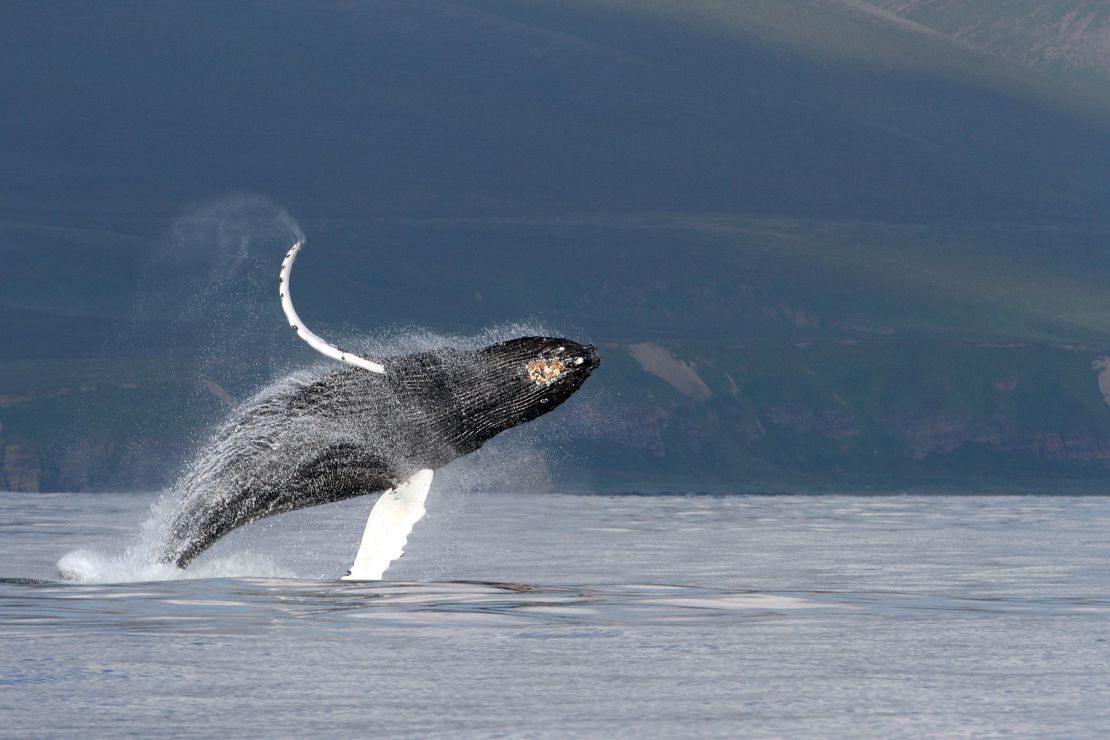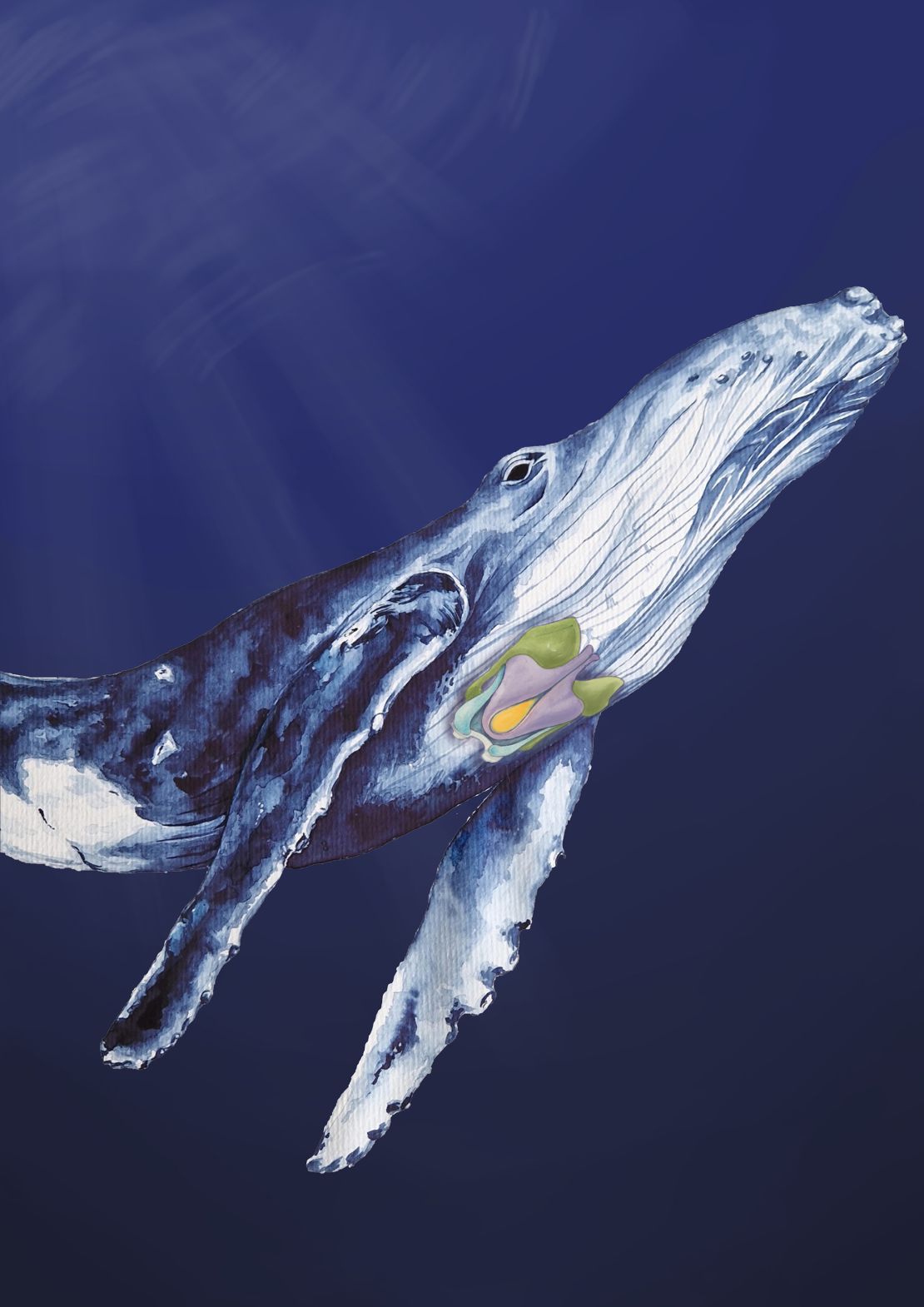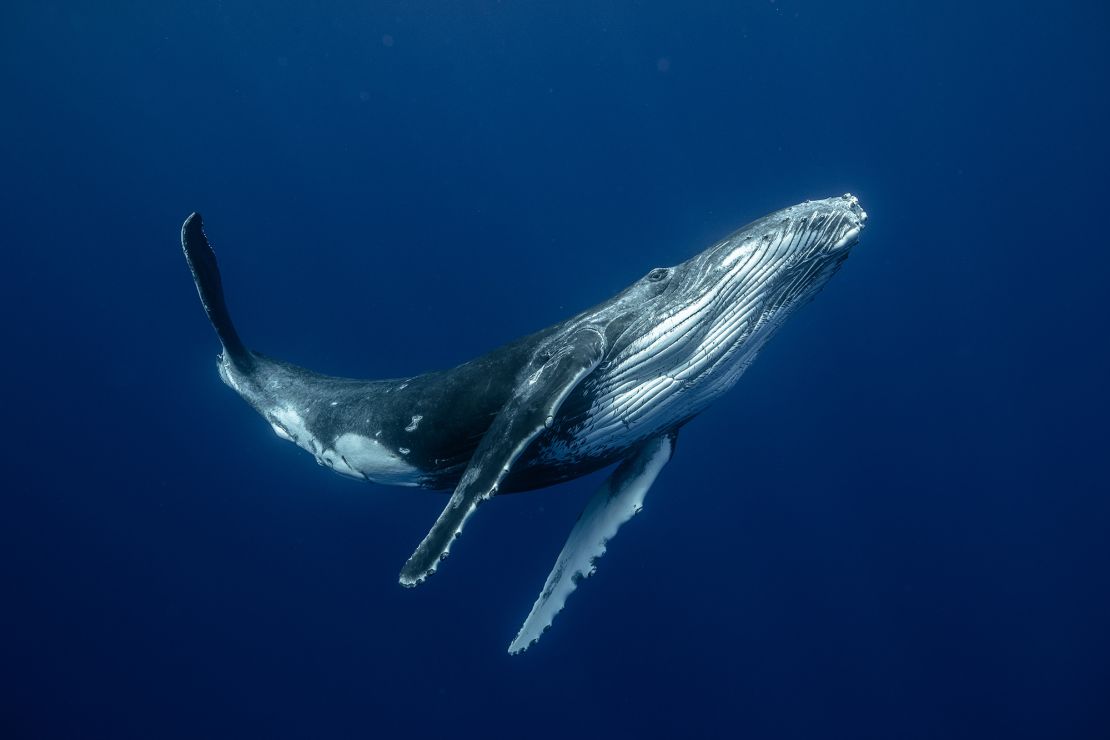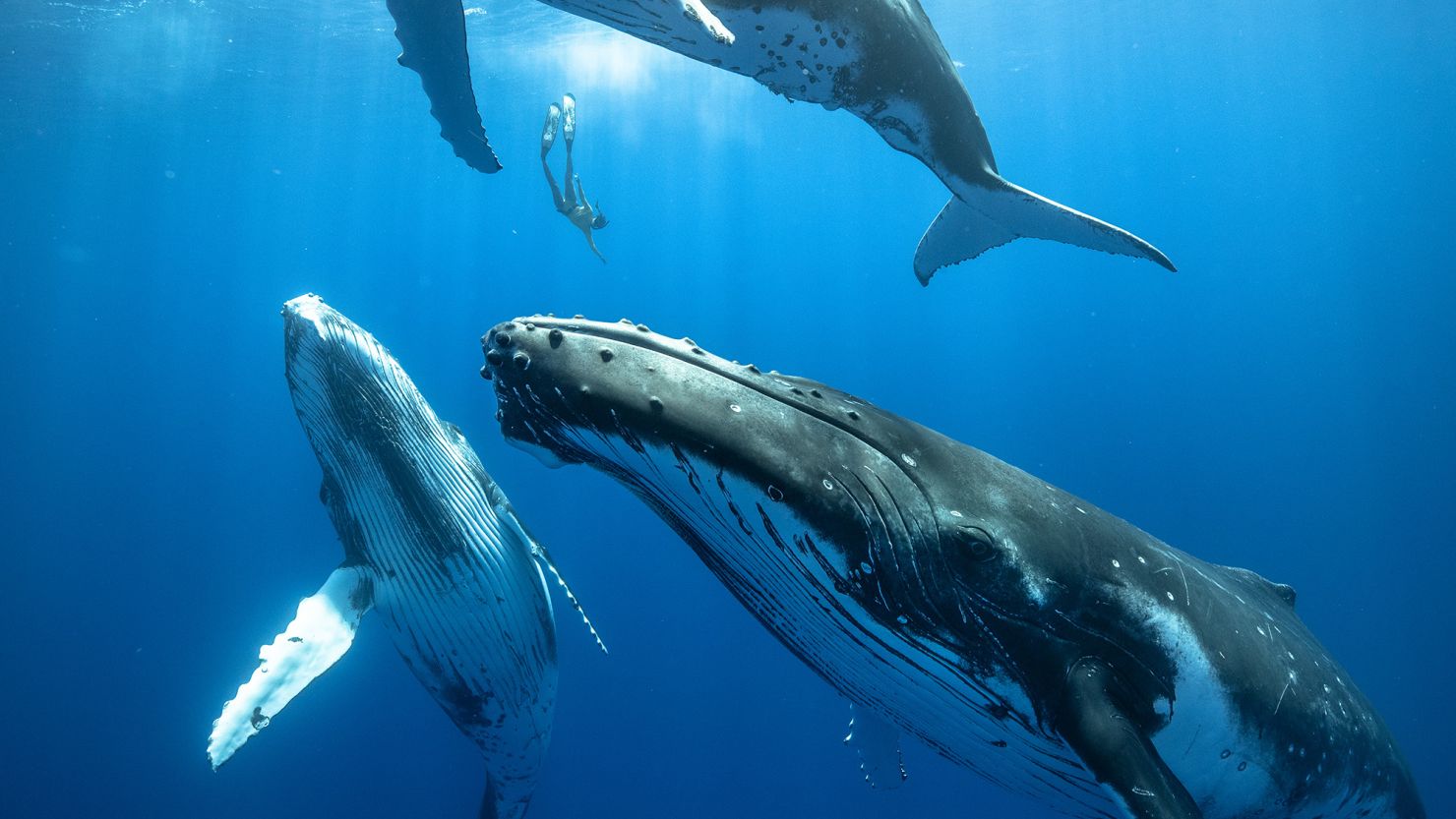Eerie, fascinating and at times unnerving, whale songs are one of the most mysterious sounds to have been heard reverberating through the ocean.
How baleen whales, which include humpback whales, are able to sing underwater has eluded scientists since whale songs were first discovered more than 50 years ago.
While toothed whales, which include dolphins and killer whales, developed a vocal organ in their nose to produce sound, baleen whales are thought to use a larynx — or voice box — in their throat to do so, according to a new study published in the journal Nature on Wednesday.
A baleen whale’s larynx is shaped differently from other mammals. It has long, rigid, cylinder-like cartilages that form a U shape. This structural adaptation allows the leviathan to breathe massive amounts of air in and out when they go to the surface, according to the study.
In the respiratory tract, the evolved nasal and oral plugs protect the airways from water when the marine mammal breathes and eats.
Air sacs also evolved in a way that may allow a baleen whale to recycle air while creating vocal sounds, according to researchers.
Unlocking how whales vocalize could help scientists gain a better understanding of how human-made noise pollution in marine waters impacts the sea giants.

In addition to documenting recordings of animals in the wild, researchers were able to acquire a sei whale, humpback whale and minke whale soon after they had died between 2018 and 2019 and study them in the lab in great detail. This level of analysis “has never been done before,” lead study author Coen Elemans, a professor of bioacoustics at the University of Southern Denmark, told CNN Thursday.
The scientists also created computer models of the whales’ voice boxes that simulated aspects they could not measure in the lab, such as the effect of muscle contraction on sound production.
Through this simulation, researchers found that the baleen whales’ voice box “have a completely novel mechanism that is not described in any other animal,” Elemans said.
Among the specialized structures was a fatty cushion that vibrates when air is pushed out from the lungs, allowing the whales to create low-frequency sounds underwater to communicate over large distances.
Since the ocean is dark, sound is the primary means whales have to find each other and, therefore, mate, Elemans said. The study solves a puzzle “for a whole group of really iconic animals,” he added.
“They’re like the biggest animals that ever roamed this planet. They’re super intelligent, they’re very vocal, they’re very social. And for those animals, we now figured out how they’ve been able so successfully to communicate with each other on the water. And this evolved probably like 40 million years ago and has allowed the whales today to be successful,” he continued.

Human disruptions
However, this “cool” mechanism also “limits” the whales, Elemans said.
The baleen whales were only able to make low-frequency sounds from the water’s surface to a depth of around 328 feet (100 meters) maximum, the study team found. That’s because the whales cannot be too far from the ocean surface since they need air to produce their calls, which have a maximum sound frequency of 300 hertz.
This depth and frequency overlap with noises made by most human-made vessels, which is nowadays often of 30 to 300 hertz near the ocean surface, according to the study.
This means that most boating noises mask calls between baleen whales, reducing the distance over which they can communicate.
“We really have to change the noise we make, the type of noise we make, when we make it, where we make it. And we hope that this study can help to … mitigate the noise we make,” Elemans said.

Evolutionary biologist James Rule, a research fellow at London’s National History Museum who was not involved in the research, described the study as “groundbreaking,” telling CNN Thursday that it proposed “a novel way that whales produce complex underwater songs.”
The finding that the whales are limited in the frequency of sound they can make “is important, as human-made noise pollution in the ocean is an ever-increasing problem that disrupts the lives of marine mammals,” he added.
“This highlights the vital role that studying and digitising animal morphology has in answering some of the greatest questions regarding the life of the (world’s) most elusive and mysterious animals,” he continued.
Ellen Coombs, a Peter Buck Postdoctoral Fellow at the Smithsonian National Museum of Natural History who was not involved in the study, said in a statement to CNN, “Many baleen whale populations are starting to increase in number thanks to the ending of commercial whaling by most countries — but it looks like these magnificent animals are now dealing with the next man-made challenge, and it’s a noisy one.”
The study, which “just started to scratch the surface,” involved young animals belonging to only a few animal species, said Elemans, adding that his team would like to study adult animals next.
Sign up for CNN’s Wonder Theory science newsletter. Explore the universe with news on fascinating discoveries, scientific advancements and more.







